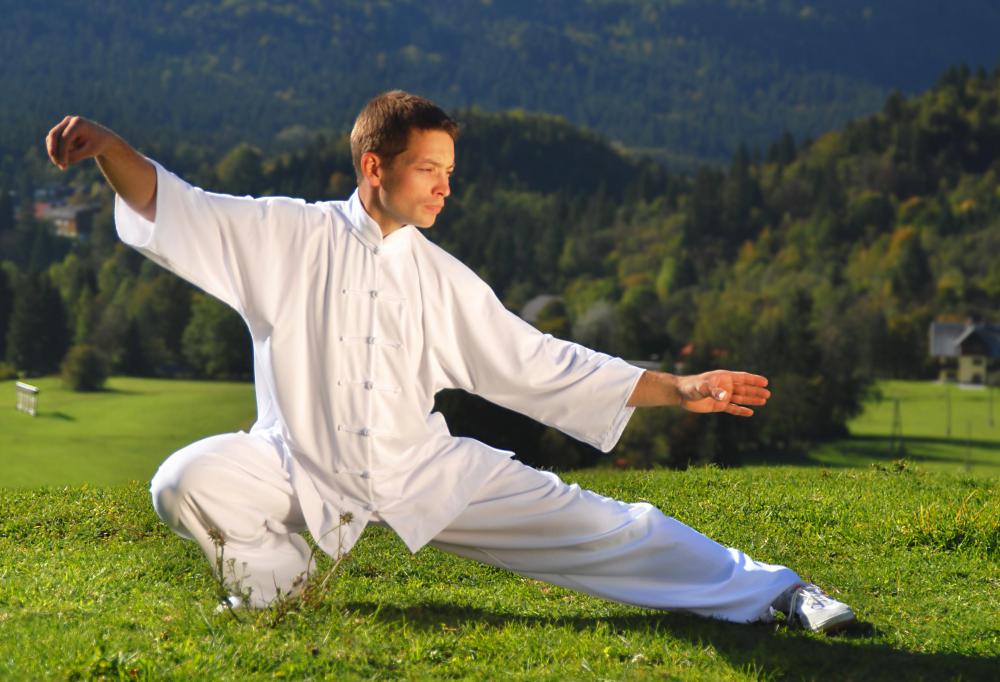At WiseGEEK, we're committed to delivering accurate, trustworthy information. Our expert-authored content is rigorously fact-checked and sourced from credible authorities. Discover how we uphold the highest standards in providing you with reliable knowledge.
What Are the Different Meditation Positions?
Meditation is an ancient practice that actually encompasses many different disciplines, from the fluid movements of Tai Chi to the still poses of Zen Buddhism. There are hundreds of possible meditation positions depending on the type of meditation being performed and the skill level of the participant. The most common, however, are the lotus, the half-lotus, the chair position, and the kneeling position.
The lotus position is one of the most popular meditation positions. It is performed by bringing each leg, starting with the right one, up into a cross-legged position, with the foot resting on the opposite thigh. The sole of the foot should be facing upward, and the hands should rest facing upward on the knees with the thumb and pointer finger forming a circle. This position is said to stimulate the spine and ease pain associated with a compressed sciatic nerve. It may take some practice to become flexible enough to perform the lotus position, and those have difficulty may have better luck with the half-lotus.

Like the lotus position, half-lotus meditation position is performed by folding the legs inward into a semi-crossed leg position. Unlike the lotus pose, however, only one foot rests on the opposite thigh. The other foot is tucked under so that the heel rests beneath the thigh on the opposite side of the body. The hands should be placed in the same position as in the lotus pose. Those with knee or ankle injuries shouldn’t perform the lotus and half-lotus meditation positions without first speaking to a physician.

The chair position may be easier for those who cannot perform the lotus or half-lotus meditation positions due to injuries or lack of flexibility. It is performed by sitting in a straight-backed chair with the feet flat on the floor. The hands are held in a lightly clasped position close to the abdomen with the palms facing upward and the thumbs forming an oval. The key to performing this pose successfully is to keep the upper back straight while the lower back curves slightly to avoid placing pressure on the base of the spine.

The kneeling, or seiza, position involves kneeling with the buttocks either resting on the feet or on a rolled towel or pillow placed over the ankles. If kneeling on a hard surface, it is best to place a cushion beneath your knees for support and protection. As with the other meditation positions, keeping your upper back straight while allowing your lower back to follow its natural curve is one of the most important aspects.
Those with preexisting medical conditions, especially those that affect the musculoskeletal or circulatory system should check with a physician before attempting most meditation positions. For those who do not feel comfortable performing any of the more popular meditation positions or cannot perform them due to injuries, laying down flat on the back is another option. Meditation is a highly adaptable, personal activity, and the main key is to find a pose that promotes relaxation, even if that pose isn’t considered one of the traditional meditation positions.
AS FEATURED ON:
AS FEATURED ON:













Discuss this Article
Post your comments